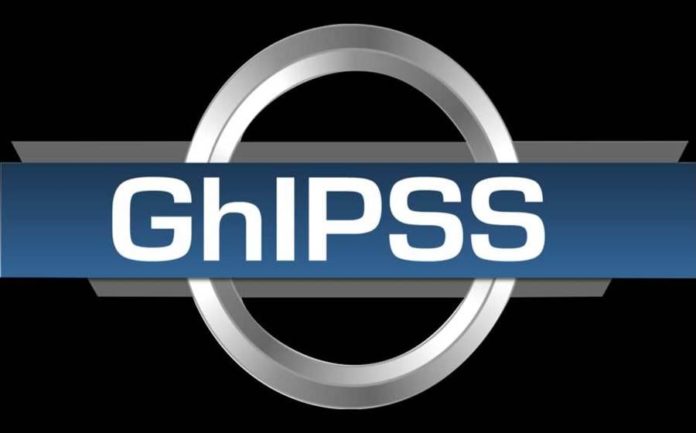
The half-year performance report of the Ghana Interbank Payments and Settlements System (GhIPSS), indicate that whereas COVID-19 took a toll on all the services on the GhIPSS platform, Mobile Money Interoperability (MMI) and GhIPSS Instant Pay (GIP) saw massive growth.
Indeed, the numbers would show that even the resounding performance of GIP was overwhelmingly due to transfers from bank accounts to mobile wallets through the interoperability platform.
Per the report, GhIPSS processed a total of 29 million transaction in the first half of the year, and the value of those transactions was GHC113 billion, which is nine percent higher than the GHC103 billion in 2019.
Even though the total number of transactions – 29 million – is 81% higher than that of 2019, which stood at 16 million, most of the services witnessed decline in terms of volume of transaction, except for mobile money interoperability and GIP.
Volumes

Mobile money interoperability saw a whopping 444% growth in volume, from 2.5 million in half year 2019 to 13.6 million transactions in 2020, while volume of transaction on GIP also grew by 600% from just 300,000 in 2019 to 2.1 million in 2020.
According to the report “GIP’s outstanding performance is largely driven by transfers from [bank] accounts to [mobile] wallets – a total of 2.1 million transfers was done [in the direction], representing 86% of the GIP transfers.”
On the flipside, the GhIPSS’ Clearing House, e-zwich and gh-link suffered varying levels of decline in transaction volumes owing to the socio-economic impact of COVID-19 on users of those platforms.
Of the three, gh-link was the worst affected over the period, with a 29% decline, followed by e-zwich with a four percent decline because “many e-zwich customers were unable to access services from the banks”; while Clearing House lost one per cent in volume of transaction “owing to the low economic activities during the 3 weeks lockdown period.”
Values
In spite of the COVID-19-induced declines in volume of transaction, all the services saw some growth in value of transactions, except gh-link.
Per the report, mobile money interoperability recorded a whopping 436% growth in value of transaction from GHC200 million in 2019 to GHC1.1 billion half-year 2020; while, GIP recorded an equally impressive 358% growth in value of transaction, from GHC500 million in 2019 to GHC2.7 billion in half-year 2020.
But contrary to the volume of transactions on the GIP platform, which was driven largely by bank account to mobile wallet transfers via the interoperability platform, the increase in the value of transaction on GIP, was largely due to transfers between bank accounts, as those transfers accounted for GHC1.8 billion, representing some 69% of the total.
According to the report, the Clearing House remained the main channel for transfer of big amounts, recording some four percent growth from GHC100 billion in 2019 to GHC104 billion this year.
The report attributed the growth in the Clearing House performance to the boost in the ACH Direct Debit transfers, which recorded most growth in the clearing house because, added to its original use by insurance companies to collect premiums, manufacturers have also adopted it for the collection of payments from retailors.
Meanwhile, the e-zwich platform also recorded 62% growth in value, driven by PDS payments by government and money transfers across e-zwich cards.

GhIPSS Chief Executive Officer, Archie Hesse, noted that Fintech and telcos accounted primarily for the impressive performance of the mobile money interoperability platforms, adding that over the period, GhIPSS signed on six new Fintech companies and they will be signing more this year.
He therefore urged the banks to obtain the necessary licenses to acquire their own wallets and connect to interoperability platform and “tap into the vast and thriving mobile money ecosystem”.
Opportunities
According to him, even though COVID-19 caused a decline in the volume of transaction in some services, the pandemic has opened a new window of opportunities and industry players would be expected to take advantage of them to cement the digital payment culture brewing among customers.
The GhIPSS CEO reminded them that the GhQR Code and Proxy Pay services have been launched, and what is left is for industry player to go to quickly market with them and give customers even more convenient electronic payment choices.
Archie Hesse observed that some institutions are already at various stages of implement of the GhQR Code, saying “I would like to extend my appreciation to those institutions and encourage the others to hasten with the testing and go-live process now that the opportunities exist.”
As a measure to boost the usage of the e-zwich and gh-link cards, Archie Hesse said GhIPSS has partnered with Famaco to introduce the Secure Android 6 POS devices, which can run both cards, adding that that the partnership between gh-link and Goil, which allows gh-link card users to buy fuel at GOIL with their cards, is also a measure to boost usage and give customers convenience.
“Plans are [also] far advanced with the implementation of the new addition to ACH Direct Credit family; the Near Real ACH service that allows users to send and receive money almost in real time,” he added.










